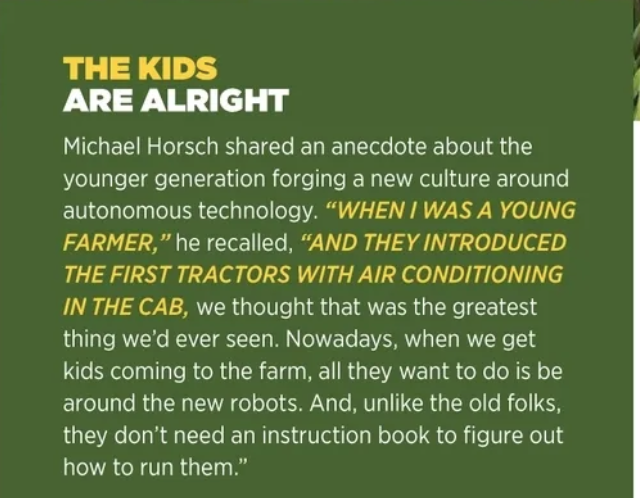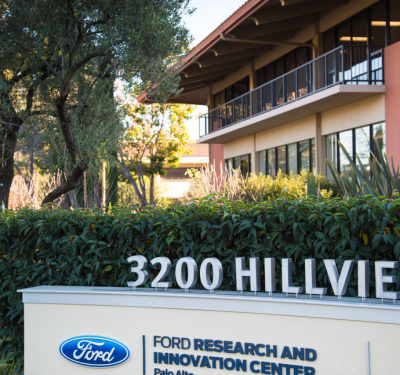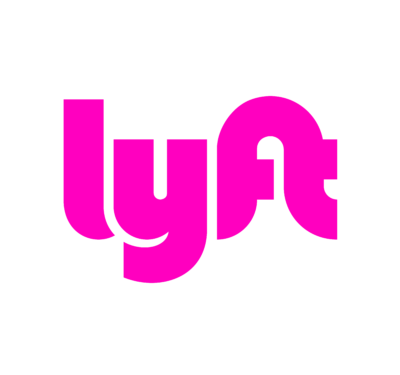
From family farming to the Berlin Wall’s fall to today’s autonomous solutions, HORSCH and its namesake founder have seen it all.
Michael Horsch embraces a duality. He’s a 40-year family farmer whose 2,500-employee company grows on thousands of acres—and also provides equipment for many more through a global factory network. Within the next 2 years, the company he founded plans to deploy “some serious approaches” involving driverless equipment for large-scale farming operations. Trimble is partnering in many of these projects.
“John Deere basically offers an autonomous tractor that can do everything,” Horsch said. “We go the other way around. We offer an autonomous planter, a seeder, a sprayer that has no cab.” As Meiko Martin, autonomous solutions product manager for HORSCH collaborator Trimble put it, “all work is actually done by the implements. The tractor itself, as we know it today, is actually just a power unit.”
THE PATH TO AUTONOMY
Starting as family farmers of winter wheat and barley, frustrations with piloting “a stupid plow” over rocky terrain had his relatives saying, “We’re going to make a difference in farming.” These days, that difference increasingly includes approaches to autonomy.
Unexpectedly, it was the tearing down of the Berlin Wall that launched the company’s autonomous future. “Nobody ever could imagine that would ever happen,” Horsch recalled. “Today my home is about 30 miles away from the former Iron Curtain.
“Overnight,” he continued, “large-operation corporate farms were desperately looking for farm equipment. This was basically my biggest chance in life—basically, take a blacksmith shop and grow it, and start to farm.” Air-conditioned cabs, GPS and other developments changed the face of farming, and these days, the Horsch family has close to 20,000 acres of farmland just for testing.
“What we offer—seeding and tillage and spraying—most of it is developed by ourselves mainly for our own purpose. Sometimes we don’t even ask the customer, ‘What do you want?’ We’re still freaky.”
Around 2000, RTK autosteer systems literally took the field, and the company bought one and “played with it” on one of its farms in the Czech Republic. “I started drawing up a few crazy ideas of what the first autonomous tractors should look like and what ‘autonomous systems’ means in terms of integrating a farming system,” Horsch said.
About a dozen years ago, HORSCH began exploring control traffic farming on a new farm. The resulting path planning system reduced damage to soil and became another step toward full autonomy.
“We then said, ‘Now, let’s fulfill our ideas about certain machines, build them to become autonomous machines.’” Two or 3 years ago saw the company’s first autonomous seeder, a 60-foot wide 24030 planter—an existing design, “robot ready; just one step further.” Fast forward and HORSCH is building “all kinds of prototypes, up to 80-foot planters working right now in Brazil, full autonomous seeders. Mainly, what we do is we build big stuff.
“We think it’s not the autonomy by itself,” Horsch reiterated. “It’s more like it’s a piece of building a complete, fully controlled system of an arable farm. And we have a 20,000 acre sandbox to play with.”

HORSCH AND TRIMBLE
HORSCH initially used radar and LiDAR developed by the automobile industry. “But that journey didn’t take very long because they are far behind and too, too slow.” HORSCH now has 70 people working toward full autonomy even as the company values Trimble’s solutions.
Martin noted how Trimble’s own road toward autonomy mated with HORSCH’s. “We were working for multiple years on providing implement control units, ECUs [engine control units], section and rate control, for example, but also positioning services and guidance. About 2 years back, we said, ‘We’re going to take the next level of automating: collaborating with path planning, considering operating and turning speeds to optimize efficiency, collaborating on the understanding of machine behavior.”
Horsch cited some key Trimble contributions. “Trimble is far more flexible with some of the software parts and hardware parts we need, which we don’t want to develop ourselves. And they have one thing that right now is very important—a hack-free RTK signal. This is probably the most important piece in safety in autonomy: an RTK signal that you can’t hack.
“The other piece, also with Trimble, is the collision avoidance system. It’s a separate computer. We also developed this together.”
“We take in data together,” Martin added, “and analyze it afterward based on machine behavior and our technology. Together, we can accelerate developments.
“You experience a lot and learn in the field,” Martin said. Including at HORSCH’s test farm: “We have two engineers now in that 20,000-acre lab.”






